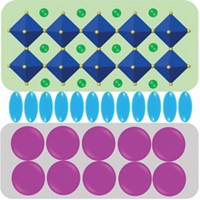Advertisement
Grab your lab coat. Let's get started
Welcome!
Welcome!
Create an account below to get 6 C&EN articles per month, receive newsletters and more - all free.
It seems this is your first time logging in online. Please enter the following information to continue.
As an ACS member you automatically get access to this site. All we need is few more details to create your reading experience.
Not you? Sign in with a different account.
Not you? Sign in with a different account.
ERROR 1
ERROR 1
ERROR 2
ERROR 2
ERROR 2
ERROR 2
ERROR 2
Password and Confirm password must match.
If you have an ACS member number, please enter it here so we can link this account to your membership. (optional)
ERROR 2
ACS values your privacy. By submitting your information, you are gaining access to C&EN and subscribing to our weekly newsletter. We use the information you provide to make your reading experience better, and we will never sell your data to third party members.
Energy
Additive Boosts Organic Solar Cell Efficiency
Solar Energy: Polymer enhancer may improve flow of electrons within organic photovoltaic devices
by Aaron A. Rowe
March 8, 2012

Some researchers want to ditch the inorganic materials found in photovoltaic cells and replace them with organic ones. Using polymers and organic compounds would be easier for manufacturers, and in theory it would lead to cheaper devices. But organic-based cells are less efficient at converting solar energy into electrical energy than their inorganic counterparts. Now researchers report that adding a tiny amount of a polymer to an organic cell’s materials can increase its efficiency by almost 30% (ACS Nano, DOI: 10.1021/nn204589u).
In a polymer-based photovoltaic cell, two electrically conductive polymers are sandwiched against each other, one called a donor polymer and the other called an acceptor polymer. When light strikes the polymers, it creates a one-way flow of electricity from the donor toward the acceptor material.
Timothy Swager, a chemist at the Massachusetts Institute of Technology, says that, to improve cell efficiency, many researchers have focused on tweaking the backbones of existing donor and acceptor materials or on designing new ones. He and his colleagues took a simpler approach: They designed a polymer they could just add to existing materials in a cell that would increase efficiencies.
Swager and his colleagues, Vladimir Bulović, Jose Lobez, and Trisha Andrew, constructed photovoltaic cells consisting of poly(3-hexylthiophene) as the donor and a fullerene-based polymer as the acceptor, both materials that often find use in organic photovoltaic cells. In some of the cells, they added a second thiophene-based polymer that contained aromatic side groups. The chemists looked at six additives with different side groups. The researchers then tested the efficiency of the cells.
Compared to cells with no additives, the ones with a polymer additive were more efficient. The best cell, which increased efficiency by 28%, was one with an additive that contained perfluorophenyl groups. The researchers had added only a small amount of the enhancer, about 0.25% of the total weight of the polymers.
The additive works by situating itself between the donor material and the acceptor material, Swager says. He and his team think that at the interface, the additive’s aromatic side groups help keep electrons flowing. In control experiments, when the additives were left out, the cell’s electrons and holes didn’t last as long.
Swager and his colleagues tried the additives with only one class of solar cells, but they suspect that if researchers design side chains for other additives, they should improve the performance of many organic photovoltaic devices.
Additives that sit at the donor-acceptor interface “open a new direction to polymer solar cell research,” says Yang Yang, an electronic materials researcher at the University of California, Los Angeles. Until now, he says, researchers hadn’t looked to improve the interface.
Qibing Pei, an organic electronics researcher at UCLA, is interested in seeing how the additive strategy works on more-efficient donor-acceptor polymer pairs: “A 30% increase of power conversion efficiency with these polymers would be fantastic.”




Join the conversation
Contact the reporter
Submit a Letter to the Editor for publication
Engage with us on Twitter